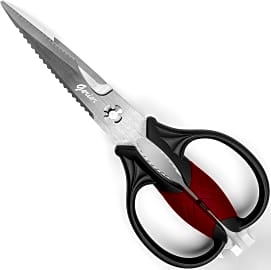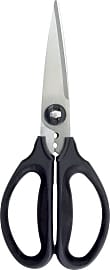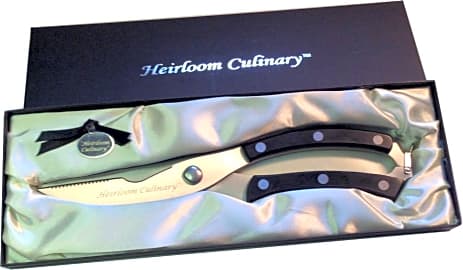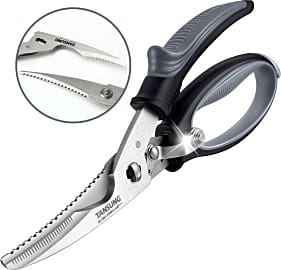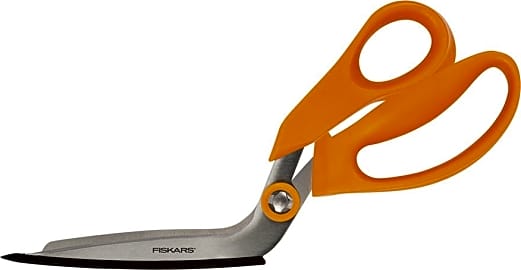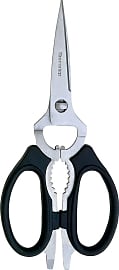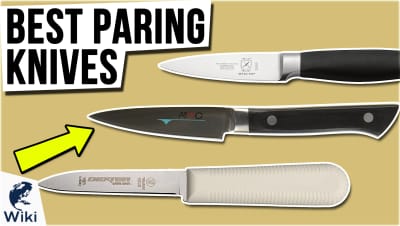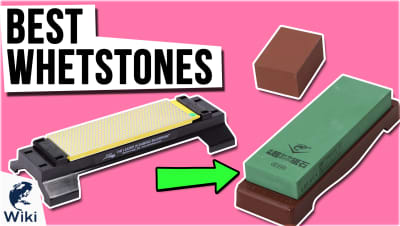The 8 Best Kitchen Shears

This wiki has been updated 43 times since it was first published in September of 2015. A wise chef rarely uses a knife on jobs that scissors can tackle just as effectively. If there's a case of whole birds to break down, a durable pair of kitchen shears will make the entire process easy and efficient. Also ideal for trimming fat, opening lobsters, cleaning shrimp, and chopping herbs, these top-rated selections include models good for home and professional cooks. When users buy our independently chosen editorial selections, we may earn commissions to help fund the Wiki.
Editor's Notes
April 22, 2021:
We dug deep into some independent real-world reviews to make sure we brought you only the best selections. So, we no longer recommend the Wusthof or Mairico models, as neither one performs particularly well at most common tasks. We also no longer recommend the Cutco 77C, because while they work okay, they cost far more than anyone should spend on kitchen shears.
Otherwise, there haven't been many recent changes to this Wiki. The one major update is the introduction of a new #1 option, the Shun DM7300. From a highly respected bladesmith, these outperform most of the competition and are outfitted with just about all the helpful features you'll find on any shears.
Our next-best pick, the Kai DH-3005, got a bump up from a lower position because, just like the Shun, they perform very well in everyday use. Without things like a bottle opener or bone notch, they're not quite as versatile as the Shun, but if you're mostly focused on using shears as they're mainly intended, it's hard to go wrong with the Kai.
March 09, 2020:
Since our list only had one pair of dedicated poultry shears, the Heirloom Culinary, we added another option with the same scoop-style blade design, the Tansung Heavy-Duty. This new option costs half as much, and is ideal for anyone who doesn’t necessarily need a heavy-duty pair of shears, but still needs to spatchcock a chicken once in a while.
We also removed the Herb & Veggie gardening shears and replaced them with the Gerior Utility, a more affordable and versatile option. The Gerior Utility are packed with little accessories and features, and would be great for someone who wants to reduce their kitchen clutter, instead of having separate tools for claw-crackers, bottle openers, vegetable peeler, etc.
A task that I have always found kitchen shears useful for - but don’t see mentioned in any descriptions - is chopping up canned whole tomatoes. Fishing out the tomatoes and performing this task with a knife on a cutting board is not only messy, but you lose a ton of that valuable juice. With shears, you can just leave the tomatoes inside the can as you snip away.
Just like a regular knife, kitchen shears need to be properly sanitized after coming in contact with raw meat to avoid the spread of dangerous bacteria. Precautions like this are especially important in homes with older family members with weakened immune systems.
Making The Cut With Kitchen Shears
Most good pairs of kitchen shears feature two thick, durable scissor blades mounted in hard, easy-to-grip handles.
Any serious chef will tell you that one of the best tools to use in the kitchen isn't an extra-sharp paring knife, a large cleaver, or a serrated blade, but is rather a pair of kitchen shears. With kitchen shears -- also simply called kitchen scissors -- you can make deft, precise cuts quickly and repeatedly. Using scissors to cut through everything from chicken to kale to carrots can save you time and reduce hand fatigue as compared to using a knife to prepare all your recipe's ingredients.
Most good pairs of kitchen shears feature two thick, durable scissor blades mounted in hard, easy-to-grip handles. Many chefs have no need for the special features you will find in some pairs of kitchen shears. If all you use your kitchen shears for is trimming poultry, fish, and other meats -- some of the most common uses for these implements -- then there is no need to have herb strippers or a built in can opener. The only special feature you might want to consider in kitchen scissors intended primarily for poultry and other meats is a long, slender blade design. These slender blades make it easy to snip at the tendons and even the bones that are tucked deep into a cut of meat, especially a larger piece of poultry such as a whole chicken or turkey.
Other kitchen shears are designed to deliver maximum cutting power that you might need with larger bones or thicker root vegetables. If you cut through hard-to-chop foodstuffs regularly, look for a pair of kitchen shears that has spring-loaded handles that will pop open after each closure. This feature will greatly reduce hand strain and increase your efficiency as you prep food. However, the spring-loaded design can reduce the precision of your cuts, so be mindful if final presentation or extreme accuracy of cuts is important for your meals.
There are many specialty kitchen shears out there that might be a poor choice for one cook, but the perfect tool for another. These include shears with built in herb strippers, a bottle opener, or even integrated screw drivers. For the chef who regularly makes pizzas, quesadillas, or other flat foods that need to be cut into pieces, consider kitchen shears that feature a flat, wide base below one of the blades. This design helps the shears glide under the foodstuff, creating straight, even cuts.
And don't forget about other chefs, too: a good pair of kitchen shears makes a great gift, especially as so many chefs don't realize how handy they can be.
Of course, scissors can't replace all of your kitchen knives, as they are not suitable for cutting certain softer foods, like tomatoes, or for larger foods like a potato or even a good-sized cucumber. Your knives will always have a place in the kitchen, working in tandem with other tools and gadgets.
Keeping Shears Sharp And Clean
As with any scissors, the sharper your kitchen shears are, the better they will work. One of the best ways to keep kitchen shears sharp is to keep them clean. Any build up on the blades can harden and adhere to the metal, eventually corroding the cutting surface. And as you likely often use your shears to cut meats and raw foods that are unsafe for consumption, cleaning the shears well is the only way to make sure your food prep is safe, too.
These unique sharpening methods are not recommended for serrated blades, but for straight blades, they can help restore an edge.
If your kitchen shears separate into two halves, as many do, disassemble and then hand wash each scissor individually. Simple dish soap and warm water should be all you need. If your shears are particularly dirty, or for an occasional deeper cleaning, it's fine to put them in the dishwasher as long as the manufacturer states it; just try to make sure the blades don't rub against other metal objects, and get the shears out of the dishwasher and fully dry them shortly after the cycle ends.
As for sharpening kitchen shears, the best approach is to use a dedicated sharpening stone -- or whetstone -- and move the wide, flat area of the scissor blade (the interior side that passes the other blade) over the stone until the edge is reestablished.
Other approaches you can try include cutting through strips of sand paper or layers of folded aluminum foil. These unique sharpening methods are not recommended for serrated blades, but for straight blades, they can help restore an edge. Just make sure you cut slowly and steadily through the material, starting at the base of the scissors.
A Few Words On A Few Cuts
Perhaps the best thing about kitchen shears is not that they can complete cuts a knife can't, but that they cut certain foods more quickly. Rather than chopping away at a pile of leafy herbs such as fresh basil, for example, try dropping the leaves into a small bowl, lowering your shears down into the greenery, and snipping away until you have shredded and minced the herbs to perfection.
Finally, cut away any gristle, tendons, and so forth that you don't wish to eat around, and then cook, plate, and serve your perfectly prepared chicken.
Shears are also ideal for maintaining a uniformity of cut length when preparing asparagus, celery stalks, or other foods that will be very much visible on the plate or platter. For making homemade croutons or for cutting bread into cubes to be used in soups or stuffing, kitchen shears are an excellent choice. They can even be used to quickly remove the crust if you wish.
And for cutting poultry, kitchen shears are unmatched. Using a whole roasted chicken as an example, with shears you can have the bird halved, then the legs and breasts removed, in just a few minutes. Commence the preparation by placing the chicken on its back cutting down the middle of the breast, right through the breast plate. Work from tail toward neck.
Next, flip the chicken over and cut out and then remove the backbone by making parallel cuts on either side of the spine. You will now have two halves, and be ready to separate the thighs and breasts. This should require just a few easy snips through skin. Finally, cut away any gristle, tendons, and so forth that you don't wish to eat around, and then cook, plate, and serve your perfectly prepared chicken.



